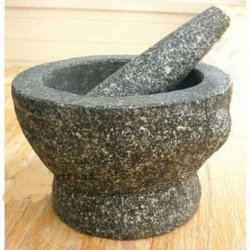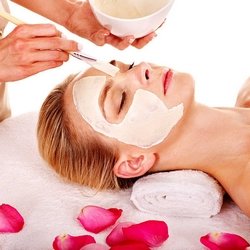
Many people want to learn how to make a face mask for themselves in order to avoid the expense, travel to and a wait at a spa.
It is possible to achieve professional spa results at your home using only ingredients that you may already have in your kitchen.
Unlike face masks at many spas, a homemade face mask will only contain natural and healthy ingredients of your choice.
The cost to you, at most, will only be a nominal one. All of our face mask recipes are natural and do not include artificial colors and preservatives.
If fragrances are recommended, we only stick with the natural ones.
How to Make a Quick Face Mask for Your Skin Type

Before you plunge into making a facial mask you need to consider your skin type and decide which is the best face mask for you.
Here you will be able to browse through the recipes and choose the one that best suits your skin type.
Types of Skin
1. Oily Skin
Characteristically, this skin type often appears shiny and has large or medium pores in the T-zone are (forehead, nose and chin).
The shiny appearance is due to overactive oil glands ( also known as sebaceous glands ). Oily skin type is often (but not always) prone to acne, including blackheads.
The best face mask for this type of skin is the basic clay mask and any acid type fruit face mask.
As well, an egg face mask is great for oily skin as it firms the skin and tighten the pores.
2. Dry Skin
This type may be your naturally occurring skin type or you may have developed it due to increment weather. Often the skin on your face will appear flaky and dull.
You will have to use hydrating or moisturizing face mask, rich in natural oils. Avocado face mask is one example of a mask that will alleviate this problem.
3. Mature Skin
As we grow older our skin acquires different characteristics than the younger skin. You begin to lose tone and notice a few wrinkles and it will become even saggy.
This characteristic is the result of natural aging. Interestingly, oily skin types mature slower and their face looks more supple than the face of their dry skin counterparts.
You will need a good hydrating face mask and an acid fruit mask.
4. Skin With Special Conditions
If you are suffering from acne, acne scars or hyperpigmentation ( e.g. brown spots ) you can learn how to make a face mask to combat any of these conditions.
You can use a honey face mask for acne, or a fruit face mask for a peel to help the acne scars, and there are also a number of whitening face masks to help lighten the dark spots on your face.
What Do You Need to Make a Face Mask

Each of the face mask recipes included in the Homemade Face Mask site will provide you with exact ingredients.
In addition you will need some utensils to mix, mash or crush the ingredients.
Here I will share with you my personal preferences. I prefer to use glass or porcelain jars and bowls for mixing and or storing my products.
In the case where you will need to mash or crush your herbs, seeds and/or fruits (or vegetables) you will need a mortar and pestle.
There are many to choose from, but you have to be careful because some of the pestles are not nice and round and some bowls may flake off a fine powder.
I prefer to use a granite mortar and pestle. Shop around, choose carefully, as you may be using it a lot.
Should you decide to shop online, make sure to read the reviews of the product to help you make a decision.
You will also need to use a whisk to mix your ingredients well. Because in most cases you will only mix relatively small quantities use a small whisk.
You may have to use a larger whisk when making, for example, face masks using eggs or egg whites.
As well, make sure you have a good set of measuring spoons.
There are many types available and I am sure you already have some in your kitchen. My personal preference is for stainless steel ones.
You can find a huge assortment of stainless steel measuring spoons online, but you may possibly get them even at your favorite grocery store.
Please do not use aluminum measuring spoons.
How to Apply Your Face Mask

Before applying your newly created face mask, please test the mixture at an inconspicuous spot to make sure that you are not allergic to this creation.
Also be aware that some of the fruit masks, specifically the ones that are acidic (this will always be mentioned in a recipe) may cause your skin to tingle or sting a bit.
If you feel a sensation like this use the mask for less than a specified time (2 -3 minutes) at first. Then as you continue to use the mask keep increasing the time until the maximum suggested time.
Applying a homemade face mask may seem very straightforward, and in most instances it is. However, you don’t just want to “slap” it on.
The best way is to gently rub the mixture onto your face. This gentle “massage” stimulates the blood flow and it will help yield better results.
Apply your mask from the chin up to your forehead. Avoid eye contact and do not apply the mask around your eyes and on your lips.
Make sure to select suitable clothing, preferably a low cut shirt that buttons up in front. You may also just wrap a towel around yourself.
Some of the masks, especially the fruit ones, will stain your clothes, so be sure to use clothing or towels that you will not mind having stains on.
Lastly, the consistency of the face masks will vary, some will remain moist and some will become dry. For the firming face masks, which will dry, you will need to be still.
The best resting position for a firming face mask is at least a slight incline, especially if you will apply the mask to your neck as well.
Now you are ready to plunge into making your own face masks. Once again, choose the face mask recipes you like. Have fun with it. Please leave us a comment, let us know about your experience.
This article was about: “How to Make a Quick Face Mask”